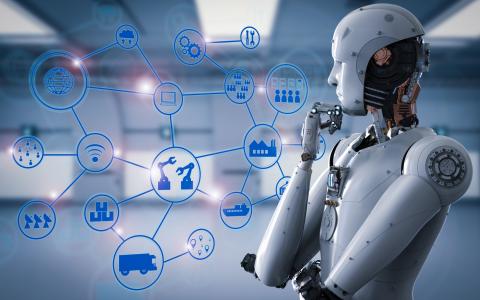
The future of work is a hotly speculated topic. Will we come to accept wearables as always-on trackers of our mood, wellness, and productivity?
Does virtual reality turn the workplace on its head? Are robots our inevitable teammates, or worse yet, our bosses?
Amidst the seemingly endless stream of “what if’s” and “when’s,” one former prediction is now a given: artificial intelligence is fully embedded into the workplace. As evidenced by countless think pieces, trendscapes, and product announcements, AI is changing the way we optimize our workstreams, automate processes, and make more effective decisions.
One area it’s having an outsized impact is likely the most unexpected: AI is changing HR. It’s helping us not only make better people decisions, but also be more human.
Manual Work Doesn’t Always Mean “Human Touch”
Working with leaders in HR and business strategy, we hear it every day: In order to make the best decisions regarding the experiences of their people, leaders need clear information about what their employees think and feel on an ongoing basis. The traditional methods for understanding employee sentiment, however, provide data that’s neither clear nor timely.
The typical approach, used by a majority of the world’s large organizations, relies on overly long surveys painstakingly designed to measure engagement.
With 50, 75, even 100 questions for employees to answer, these surveys seek to capture a totality of information, which is then analyzed manually and returned to organizational leaders weeks or even months later.
Team-level information is slow to make it to managers, if it does at all, diminishing the urgency to take targeted action to improve, and stalling engagement-oriented conversations before they have the chance to occur.
The process is so broken that most companies only attempt to measure engagement once every one to two years.
In essence, even with a stream of human intervention — from design to administration to analysis — the typical process for understanding and improving employee engagement can often feel rote and cold. Employees feel unheard, undervalued, and out-of-touch. Indeed, the traditional approach is far from “human.”
Surface the Story Your Employees are Telling
Recent advancements have made the process of gathering and understanding employee feedback less of a lift for HR teams and leaders. Real-time analysis means managers can receive team-level scores and trends as data comes in, inspiring action and spurring timely conversations.
AI takes these advancements a step further, bringing an unprecedented level of personalization to the process, helping leaders and managers glean meaningful information, while connecting employee sentiment with important outcomes.
The most meaningful insights about employees’ experiences are qualitative — arriving in employee comments in the thousands to hundreds of thousands, depending on the size of the organization. Historically, parsing these valuable comments to infer context and subtext was an impossible task that some ambitious leaders attempted, while others were left at the starting gate.
AI, in the form of natural language processing (NLP) and machine learning, is capable of extracting meaning from open-ended feedback, identifying patterns and sentiment to put employees thoughts and feelings into context.
By surfacing themes, related topics, and trends in concrete detail across multitudes of comments, days worth of time capturing the value of these comments is reduced to moments. We’ve seen first-hand the power of AI to bust long-held myths, validate hunches, and lead managers down the path to creating more inclusive, effective team environments.
Further, AI learns as it goes to identify the most prescient topics and themes to the individual organization, diminishing noise, inaccuracy, and bias as leaders work through feedback on their way to timely, relevant action.
From Disparate Feedback to Meaningful Change
Additionally, AI means leaders and managers can also receive personalized, predictive insights that allow them to not only respond more effectively to employee concerns, but to also preempt difficult situations as negative sentiment begins to stir.
Harnessing millions of data points across surveys and business data, AI can pinpoint major problems on the horizon by analyzing historic trends and connections that are typically hidden without a data science intervention.
This analysis surfaces predictions about turnover, performance, quality, safety, and more, all based on the incoming stream of employee feedback.
The system learns over time from each organization and team, making more personalized and accurate predictions, so teams can have more effective and relevant conversations about the future at their respective companies.
Using AI to give disparate employee feedback critical context gives leaders and managers the basis for taking effective and timely action, while removing much of the potential for human bias and error.
When applied to commentary, AI connects the dots between what your employees say, how they feel about it, and how it relates to engagement and other outcomes.
This information frees leaders to spend more time coaching, developing their people, strengthening relationships, and implementing strategic and creative programs that ultimately fuel the success of the business. That means a more authentic, people-centric, and ultimately, more human workplace.



